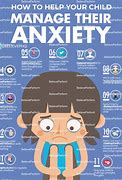Understanding Child Anxiety: Why It's Crucial To Recognize The Signs
Childhood is a time of exploration, growth, and learning. However, many children experience anxiety, which can significantly impact their well-being and development. It’s important for parents to understand the signs of child anxiety so they can provide the right support and help their children thrive.
What Is Child Anxiety?
Child anxiety is a common issue that can affect children of all ages. It’s characterized by excessive worry and fear that’s often disproportionate to the situation. Anxiety in children can manifest in various ways, making it challenging for parents to recognize.
Signs of Anxiety in Children: Recognizing The Warning Signs
Anxiety in children can present itself through a wide range of symptoms, both physical and emotional. Recognizing these symptoms is the first step towards addressing the issue.
Physical Signs of Child Anxiety:
- Frequent headaches or stomachaches: These physical symptoms are often associated with anxiety and can interfere with a child’s daily life.
- Changes in eating or sleeping habits: Anxiety can lead to a loss of appetite, difficulty falling asleep, or frequent nightmares.
- Increased fatigue or exhaustion: The constant worry and tension associated with anxiety can drain a child’s energy.
- Muscle tension or aches: Children with anxiety may experience muscle tension in their neck, shoulders, or back.
- Restlessness or fidgeting: A constant need to move or fidget can be a sign of anxiety.
Emotional Signs of Child Anxiety:
- Excessive worrying or fear: Children with anxiety may worry about things that are unlikely to happen or have an exaggerated fear of everyday situations.
- Irritability or mood swings: Anxiety can make children easily frustrated or upset.
- Social withdrawal or isolation: Children with anxiety may avoid social situations or prefer to be alone.
- Low self-esteem or insecurity: Anxiety can lead to feelings of inadequacy and self-doubt.
- Difficulty concentrating or focusing: Anxiety can make it hard for children to focus on their schoolwork or other tasks.
Subtle Signs of Anxiety in Children: Often Overlooked
While the symptoms mentioned above are common, there are also subtle signs of anxiety that parents might overlook. These include:
- Changes in behavior: Such as increased clinginess, tantrums, or a sudden reluctance to try new things.
- Regression: Like bedwetting, thumb-sucking, or other behaviors that a child has previously outgrown.
- Avoiding specific situations: A child might refuse to go to school, attend parties, or engage in activities they previously enjoyed.
- Excessive perfectionism: Children with anxiety may strive for perfection in everything they do, leading to feelings of disappointment and frustration.
Differentiating Between Anxiety and Normal Behavior: A Delicate Balance
It’s important to note that all children experience moments of fear, worry, and stress. These are normal parts of growing up. The key lies in differentiating between occasional anxiety and anxiety that is persistent and disruptive.
Here’s how to tell the difference:
- Frequency: If a child is experiencing anxiety frequently, almost daily, or for prolonged periods, it’s worth paying attention.
- Intensity: The level of distress and the impact on the child’s daily life are important indicators.
- Duration: Anxiety that lasts for several weeks or months requires professional assessment.
The Role of Parents in Supporting Their Anxious Child: Nurturing and Guiding
Parents play a crucial role in helping their children manage anxiety. It’s essential to create a supportive and understanding environment where children feel safe to share their feelings and concerns.
What Parents Can Do:
- Acknowledge and validate their feelings: Let your child know that their anxiety is real and that you understand how they feel.
- Create a safe space for open communication: Encourage your child to talk about their fears and anxieties without judgment.
- Help them develop coping mechanisms: Teach them relaxation techniques, deep breathing exercises, and positive self-talk.
- Promote a healthy lifestyle: Encourage regular exercise, a balanced diet, and adequate sleep to reduce stress levels.
- Set realistic expectations: Avoid putting excessive pressure on your child to succeed.
- Seek professional help when needed: Don’t hesitate to consult a mental health professional if you believe your child’s anxiety is severe or interfering with their daily life.
Techniques for Managing Child Anxiety: Practical Tools for Parents
There are several practical techniques parents can use to help their children manage anxiety. These include:
1. Relaxation Techniques: Finding Inner Calm:
- Deep Breathing Exercises: These simple exercises can help calm the nervous system and reduce feelings of tension.
- Progressive Muscle Relaxation: This technique involves systematically tensing and relaxing different muscle groups in the body to alleviate physical tension.
- Mindfulness and Meditation: These practices involve focusing on the present moment and observing thoughts and feelings without judgment.
2. Cognitive Behavioral Therapy (CBT): Challenging Negative Thoughts
CBT is a type of therapy that helps individuals identify and change negative thought patterns that contribute to anxiety. With CBT, children can learn to:
- Identify anxious thoughts: Become aware of the thoughts that trigger their anxiety.
- Challenge negative thoughts: Examine the evidence for and against these thoughts and develop more balanced perspectives.
- Develop coping strategies: Learn practical ways to manage anxious feelings and situations.
3. Exposure Therapy: Facing Fears Gradually
Exposure therapy is a gradual process that helps children confront their fears in a safe and controlled environment. By gradually exposing children to their fears, they can learn to overcome them.
Building Strong Communication: The Foundation of Support
Open and honest communication is essential for supporting a child with anxiety. It allows you to understand their experiences, reassure them, and help them develop coping mechanisms.
How to Communicate Effectively:
- Listen attentively and with empathy: Show your child that you care and are willing to listen without judgment.
- Validate their feelings: Acknowledge and validate their emotions, even if they seem irrational or exaggerated.
- Use simple and straightforward language: Explain things in a way they can understand.
- Avoid dismissing their concerns: Even if you think their fears are unfounded, acknowledge their feelings and help them explore them.
Choosing the Right Treatment for Child Anxiety: A Spectrum of Options
When dealing with child anxiety, it’s important to seek professional help to determine the best course of treatment. There are various options available, including:
- Therapy: Cognitive Behavioral Therapy (CBT), play therapy, and family therapy are often used to address child anxiety.
- Medication: In some cases, medication may be recommended to manage anxiety symptoms, but it should always be used in conjunction with therapy.
- Support groups: Group therapy can provide children with a safe space to connect with other children experiencing similar challenges.
Preventing Child Anxiety: Proactive Strategies for Parents
While anxiety is a complex issue, there are steps parents can take to help prevent it from developing in their children.
- Create a stable and loving home environment: A secure and predictable home environment provides children with a sense of safety and stability.
- Promote positive self-esteem: Encourage your child’s strengths and help them develop a sense of self-worth.
- Teach healthy coping skills: Help them learn to manage stress and develop positive ways to express their feelings.
- Model healthy coping mechanisms: Show your child that it’s okay to experience emotions and that there are healthy ways to manage them.
Conclusion: A Journey of Support & Understanding
Child anxiety is a common issue, but with understanding and support, parents can help their children navigate these challenges. By recognizing the signs, building open communication, and utilizing appropriate strategies, parents can empower their children to overcome anxiety and thrive. Remember, you are not alone, and there are resources available to help you and your child on this journey.

